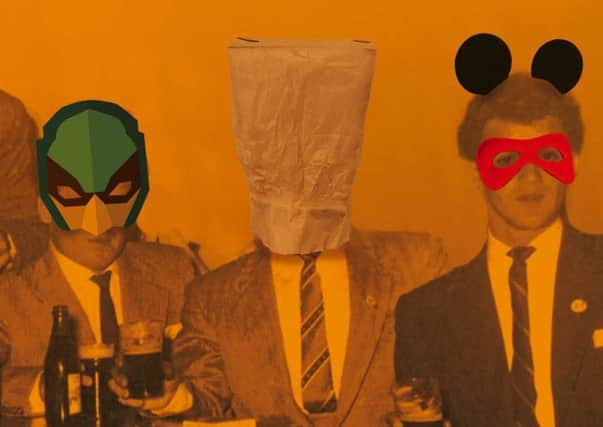Book review: For The Good Times, by David Keenan


That brief quotation encapsulates some of the novel’s demented brilliance. The narrator is Sammy, who sometimes refers to himself as Xamuel, and he is giving – a Scottish twist on the Irish history – his Private Memoirs And Confessions Of An Unrepentant Sinner. At the beginning of the book, we find the young Sammy eager to join the IRA and haunted by his best friend Tommy’s Da, a spectral figure hidden behind a curtain in bed because of illness.
This recasts the Troubles as a Gothic nightmare, and a nightmare is certainly is. Sammy has been in the Maze during the Hunger Strikes, and the Maze becomes both literal and metaphorical. It was a place and it was a kind of deranged imagination, a place where “everything became confused and the comms talked to the books and the books to the toilet paper and the toilet paper to the pipes and the pipes to the songs The Boys would sing, songs by Bobby Sands and Irish folk songs and Victory to the IRA and Victory to the Blanketmen and pop music and punk rock too, until it felt like an echoes of an echoes of an echoes”.
Advertisement
Hide AdThe novel has a hallucinatory quality. Sammy and his friends eventually take over a comic book store that was on a patch of Belfast controlled by “the Boys”. They also end up trying to bring back a hidden armaments cache. There are affairs and kidnappings and drive-by shootings. Although there are balaclavas, there is also a kind of 50s swagger of silk handkerchiefs and good brogues and well-made suits. One of the novel’s funniest features is the character’s love of Perry Como.
With the comic book aspect, Keenan almost pays homage to Michael Chabon and his The Amazing Adventures Of Kavalier And Clay: the terrorists reimagine themselves as superheroes, with Sammy (poignantly) being cast as “The Anomaly”. At other points it is more reminiscent of Roberto Bolaño, particularly in the chilling litany of the deaths he has witnessed or in which he has participated. As the paranoia descends across the narrative – was someone a double agent, was someone leaking information? – it crosses into a territory somewhere between John le Carré and Thomas Pynchon, especially as it places songs and bad jokes in between the more horrific moments. The interest in the paranormal, in séances, in holy fools, situates it alongside such books as Iain Sinclair’s White Chappell, Scarlet Tracings or Downriver.
Not all of it works. There is a point where the characters are dispatched to Glasgow, which, although it has some pertinent points to make about sectarianism, also features a rather unnecessary orgy scene which could easily have been cut without damaging the novel’s integrity. There are some typographical flourishes which, though clever (or even clever-clever) do not really add much to the novel. Not all female characters should be described by their cup-size. But that should not distract from the book’s moral core. The analysis of the differences between petty crime, thwarted ambition and an almost crusade-like sense of why one would take up arms against oppression is done admirably.
At one point, Tommy remembers a conversation: “But they’re on to something he says. There’s a way of telling the future through pain, he says to me. That’s the secret of the IRA, he says… It’s suffering that causes the future”.
I have no doubt that this novel will receive plaudits; I suspect it may also be shortlisted for prizes. It is kaleidoscopic in its verbal intricacies and its blending of religious language with “wash your mouth out with soap” language. It is serious in a way in which many novels are not really serious, and yet manages a kind of manic comedy at the same time.
The quality of the prose is some of the most lyrical and gruesome that I have read for a while. It also takes religion seriously, in a way that reminded me of Iris Murdoch in her prime. It is, and I mean this as a genuine compliment, ghastly.
For The Good Times, by David Keenan, Faber & Faber, £12.99